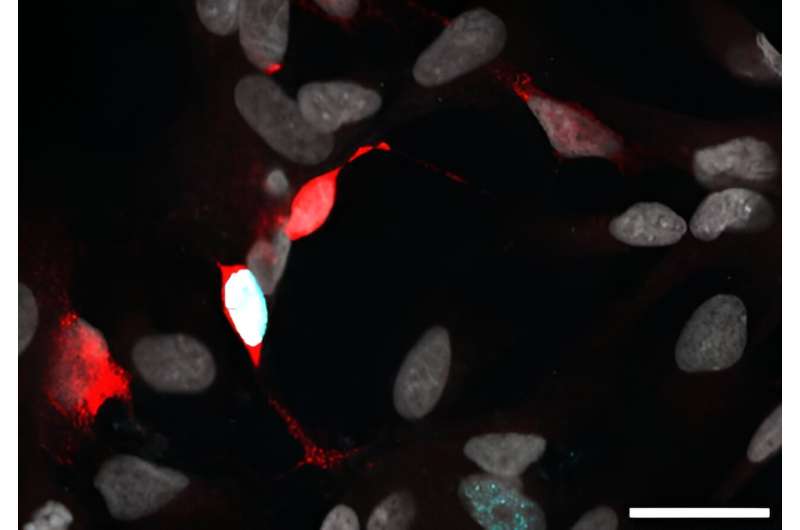This article has been reviewed according to Science X's editorial process and policies. Editors have highlighted the following attributes while ensuring the content's credibility:
fact-checked
peer-reviewed publication
proofread
Fish-like genetic program used to turn human retinal cells into neurons

Loss of neurons in in the retina due to trauma or disease leads to vision impairment or blindness, a process which is irreversible in humans. Interestingly, some animals like fish have the built-in ability to regenerate retinal neurons by turning another retinal cell type called "Muller glia" into neurons.
This conversion does not happen spontaneously in humans and other mammals, but new research by Thomas Reh, Juliette Wohlschlegel, and colleagues at the University of Washington, U.S., published in the journal Stem Cell Reports, shows that human Muller glia can be coaxed into changing identity in the laboratory, which could serve as a potential source of new neurons to treat vision loss.
"Overall, our study provides a proof-of-principle that human glia can be reprogrammed to cells that are capable of making new neurons," said Thomas Reh, Ph.D., University of Washington. "This opens up an entirely new way to repair the retina in people that have lost neurons to disease or trauma."
Muller glia are supportive cells in the retina which help photoreceptors and other retinal neurons to function properly. In some species like fish and birds, Muller glia turn into immature retinal cells upon injury and subsequently generate new retinal neurons.
By contrast, Muller glia in the mammalian retina react to injury with scar formation and inflammation without making new neurons. This difference in behavior is based on different genetic programs being activated in fish versus mammalian Muller glia after injury.
Artificial activation of a fish-like genetic program can turn mouse Muller glia into retinal neurons according to prior research. However, up until now, it has not been known if the same strategy can be used to convert human Muller glia into neurons.
To answer this question, the researchers genetically modified human Muller glia in the lab to switch on neurons-specific genetic programs, as it naturally happens in fish. Indeed, within a week, the genetically modified cells adopted a neuron-like characteristics resembling immature retinal neurons.
These findings suggest that human Muller glia can be coaxed into neurons and may serve as a resource to generate new neurons in patients' retinas in the future. Of note, Muller glia in this study were derived from immature Muller glia and it remains to be seen if similar approaches can transform adult human Muller glia into neurons, and to what efficiency.
More information: ASCL1 induces neurogenesis in human Muller glia., Stem Cell Reports (2023). DOI: 10.1016/j.stemcr.2023.10.021. www.cell.com/stem-cell-reports … 2213-6711(23)00423-X





















